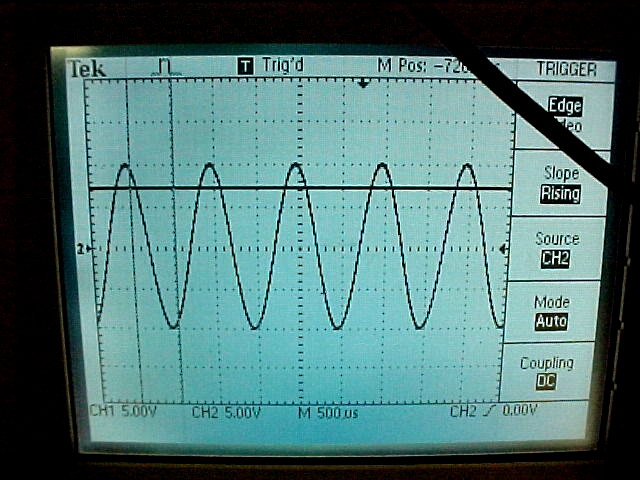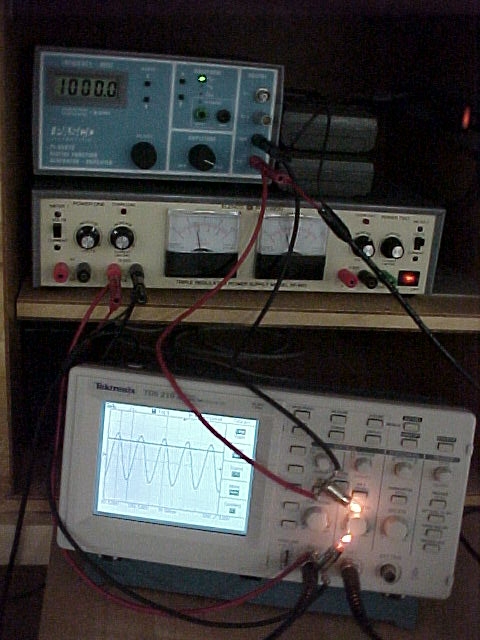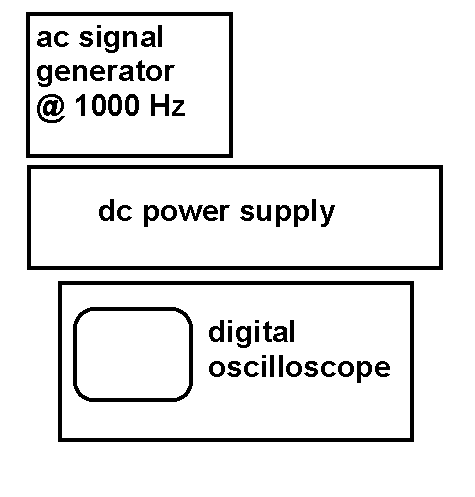Experiment of The Month
RMS
AC currents and potentials are often measured by their RMS (root mean square) values. The reason is that the product of the rms current with the rms potential difference across a load is the average power absorbed by the load.
To make the connection to power clear, we use the intensity of light from a small incandescent lamp as our indicator of power. Students have previously measured the power into a resistor submerged in water from a dc power supply by measuring the rise in temperature of the water.
We take advantage of this familiarity and compare the power delivered by a dc power source to the power delivered by an ac power source. The set up is shown below, both in photographic and schematic form.
The upper bulb is lit by the ac source, while the lower is lit by the dc power supply. Block diagram of electronics.
The light level is low in the photograph so that the lamp light is easy to see.
Students adjust the amplitude of the ac source until its lamp glows with a bright red color. Then they adjust the dc power supply voltage until its lamp glows with the same brightness. We do not provide enough power to make the lamps white-hot. It is easier to match brightness when we have the additional visual cue of color to match as well.
 Students then compare the dc voltage measurement on the oscilloscope with the ac voltage amplitude, on the second channel of the same oscilloscope. An enlarged photo of the two traces for the setup above is shown at the right. The display provides compelling evidence that larger ac amplitude is required in order to deliver the same amount of power as the dc source.
Students then compare the dc voltage measurement on the oscilloscope with the ac voltage amplitude, on the second channel of the same oscilloscope. An enlarged photo of the two traces for the setup above is shown at the right. The display provides compelling evidence that larger ac amplitude is required in order to deliver the same amount of power as the dc source.
We derive the expression for the ac power into a load of resistance R, in terms of the voltage amplitude Vmax, and find that the average power is
<P> = (1/2) (V2max)/R = (V2RMS)/R
with the definition
VRMS = .707 Vmax
With the 1/2 gone, the expression for power, in terms of VRMS, is the same as the expression for power from a dc source. That is, VRMS is the voltage of the equivalent dc power source; the dc power source that gives the same power as the ac power source.
The figure show substantial agreement with this relation between the voltage amplitude and the dc voltage that delivers the same power.

